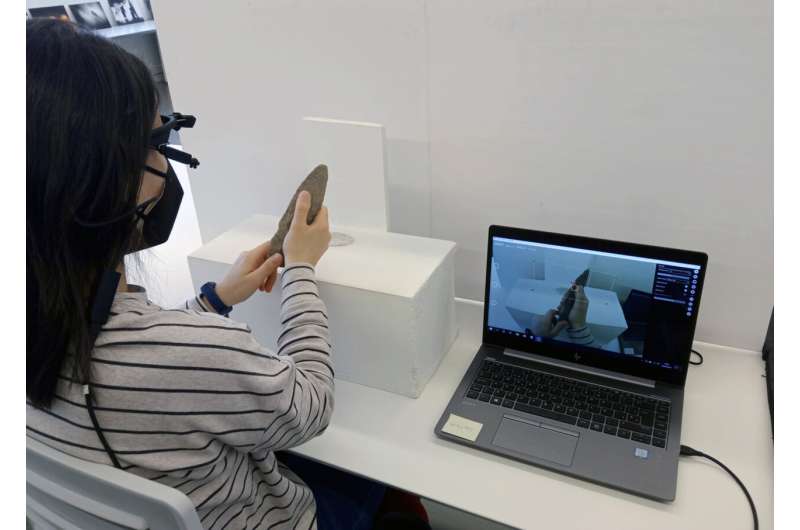First application of the eye-tracking methodology to studying lithic industry

The Paleoneurology Group at the Centro Nacional de Investigación sobre la Evolución Humana (CENIEH), led by Emiliano Bruner, has just published a study in the journal Archaeological and Anthropological Sciences which analyzes the patterns of visual exploration during handling of Lower Paleolithic tools, in the first application of the eye-tracking methodology to real stone tools.
The objective of this study, in collaboration with the University of Lincoln (United Kingdom), Universidad Isabel I in Burgos and the Centro de Arqueología Experimental de Atapuerca (CAREX), was to investigate the body-tool interaction from a cognitive perspective to see which regions of tools most attract the attention.
One of the methods for investigating visual perception is eye-tracking, which consists of detecting movements of the pupil using an infrared system. This technology was applied in the study during visual exploration and handling of a selection of tools consisting of worked pebbles and handaxes.
"This has let us quantify the attention time and analyze at which parts of the tools the gaze is directed throughout the exploration process," explains the researcher María Silva Gago, lead author of this work.
The results show that the central area of the tool is the region looked at most, followed by the top and the base. At the same time, the worked parts attract more attention than the natural surface. "In other words, the gaze is directed mainly at the functional areas," adds Silva.
When the two types of tools used were compared, differences in the visual exploration patterns were observed. Nevertheless, this exploration scheme is the same whether the tools are merely observed or are both observed and handled.
Vision is our principal source of information and plays a fundamental role in perceiving the affordances of objects: This is a concept widely used in psychology, to refer to the properties or features which tell us how or for what a certain object is used. "Identifying these affordances is an involuntary act we perform every day," states Silva.
The results obtained in this study suggest that visual behavior is directed by the perception of affordances, possibly ever since the brain-body-tool interaction, associated with the culture of the Lower Paleolithic, first arose.
More information: María Silva-Gago et al, Visual attention reveals affordances during Lower Palaeolithic stone tool exploration, Archaeological and Anthropological Sciences (2021). DOI: 10.1007/s12520-021-01413-1
Provided by CENIEH





















